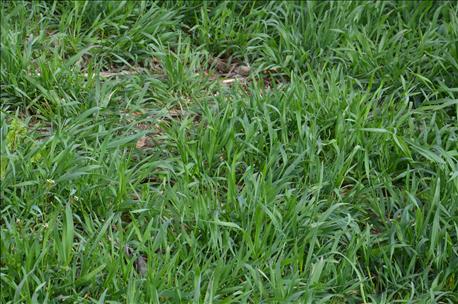
Did cover crop roots grow into tile lines in some farm fields this spring? According to credible reports, the answer is yes. Did those roots contribute to clogged tiles in some cases? Yes again. Did the clogged tiles lead to ponding and crop growth issues? Yes.

COVER CROPS WILL SURVIVE: Issues with cover crop roots growing into tile lines won’t discourage people who know the benefits of cover crops from continuing to use them, especially since professionals are addressing the problem.
Are there explanations for these problems? There certainly appear to be. Cover crop roots probably weren't the only contributor to clogged tile lines. Unusually favorable growth conditions during winter and fall likely allowed cover crop roots to grow deeper than normal, according to Eileen Kladivko, Purdue University researcher. Late April and May rains that delayed termination of cover crops probably contributed, as well. Inexperience among those trying cover crops for the first time was also likely a factor.
Does this spell doom and gloom for cover crops? Absolutely not! Why? Because too many people have proved that in many situations, cover crops provide tremendous benefits, not the least of which is decreased soil erosion and increased soil health.
But that’s not the only reason why cover crops will survive this bump in the road. Much more important, at least in my book, is that soil conservation professionals and no-till farmers who believe in no-till and cover crops are owning up to what's happening, instead of trying to sweep it under the rug. Kladivko and cohorts have already written and released a publication on the subject. Her goal is to figure out exactly why it happened, and what farmers can do to minimize the risk in the future.
Tell the truth
One veteran no-tiller says the truth is that it’s not uncommon for cereal rye roots to reach tile lines. Normally, if there is no soil in the line, the roots don’t flourish. Once the crop is terminated, the roots dry up and are flushed out, he says. He has yet to find a plugged line, even this year, but he was able to terminate cover crops when he wanted to this spring.
If something goes wrong with an idea you believe in, too often the temptation is to cover it up. Turn your head the other way, and pretend it didn’t happen.
A different farmer, just getting into cover crops and no-till, told us he attended a media training program put on for conservation farmers, held out of state, where the facilitators basically told farmers to talk about only the good things in their program. If there were issues, the facilitators said to ignore them. In fact, the farmer says they implied to lie about it, even if they didn’t use those words.
Honesty is the best policy
Early in my career I spent lots of time tracking down people trying no-till, the hot trend at that time. One day I accompanied a soil conservationist to meet various farmers who had tried no-till. If the farmer said even one word that could be construed as negative toward no-till, the conservationist would butt in.
“Now that’s not really what you mean is it?" he would say. Or, “Now that only happened one time, right?”
I don’t even remember the conservationist’s name, but I remember his strong-armed tactics. It even made me skeptical for a while.
The truth is the truth. If there is a problem, address it. Cover crops have phenomenal potential. That doesn’t mean there aren’t a few hitches here and there. Own up to them and let experts help figure out solutions.
That’s exactly what's happening here. Cover crops will survive, because the people promoting them are choosing the high road. Honesty is the best policy.
About the Author(s)
You May Also Like




